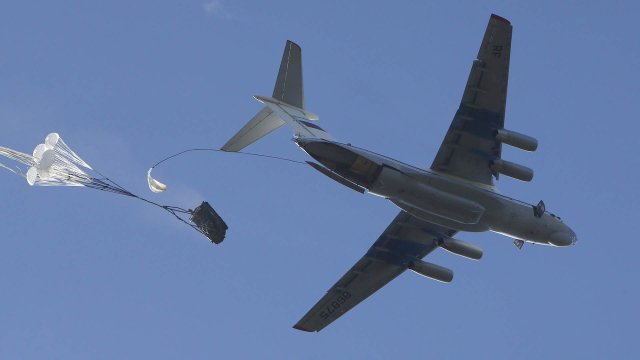No other army in the world has mastered this method50 years ago, on January 5, 1973, Soviet paratroopers proved that their profession is to do the impossible, regardless of danger.
This day was and remains a festive date for the Russian army, and especially for the Airborne Forces. Details were recalled by Izvestia.
General Margelov 's plan
The idea of landing fighters in combat vehicles belongs to Vasily Filippovich Margelov, a legendary general who is rightfully called the creator of modern airborne troops. A participant in the Victory Parade, he commanded the Soviet Airborne Forces in 1954-1959 and in 1961-1979. Margelov was a special commander, a special commander and educator of the army, perhaps the brightest in the post-war history of our country. Even in the "demob albums" of paratroopers, you will definitely find a ceremonial portrait of Alexander Filippovich Margelov. This is a unique tradition that continues in our time.
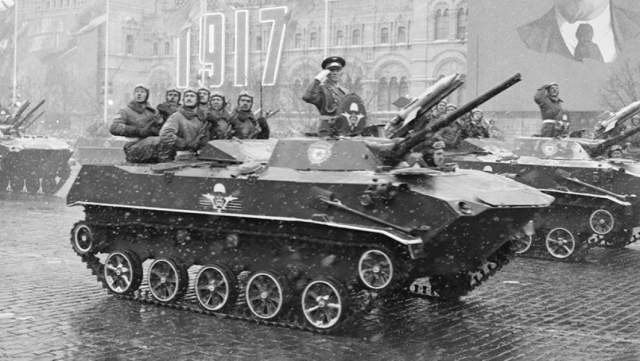
Combat vehicle amphibious BMD-1 at the military parade in honor of the celebration of the 62nd anniversary of the Great October Socialist Revolution on Red Square. onethousandninehundredseventynine
Image Source: Photo: TASS/Vasily Egorov, Vladimir Musaelian
Margelov was particularly concerned about the development of weapons that would allow the "winged infantry" to act more effectively in any situation, representing a powerful military force. In 1969, a combat landing vehicle, the BMD—1, appeared in the arsenal of the Soviet army. Unique for that time. Floating, with good cross-country ability. She was thrown together with paratroopers from airplanes. Let's add to this parachute platforms that allowed landing artillery, engineering equipment and the same BMD. But Margelov was striving for even greater opportunities.
The beginning of the story happened in 1970, at the Dvina exercises, where the paratroopers showed brilliant combat training. Margelov, congratulating his fighters on the successful completion of the building, asked them: "But if I had to jump while inside a combat vehicle? In battle?" At that time, no one believed that such a thing was possible. But it was then that the general uttered the words that forever became the motto of the Airborne Forces: "Who, if not us?"
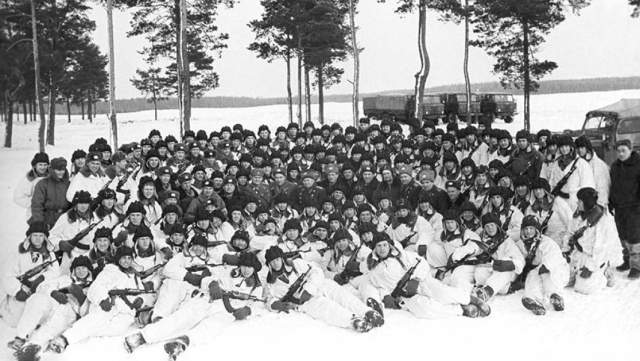
Airborne paratroopers at the combined arms exercises "Dvina". A keepsake photo with the commander of the Airborne Troops of the Soviet Army, Army General Vasily Filippovich Margelov (in the center). onethousandninehundredseventy
Image source: Photo: RIA Novosti/Lev Polikashin
The Minister of Defense of the USSR, Marshal Andrei Grechko, doubted for a long time whether it was worth going to such a dangerous experiment. Margelov's idea seemed too dangerous. When Vasily Margelov offered him his candidacy as a paratrooper, the marshal did not even want to listen. The command was not going to risk the life of the famous general, who had long passed 60. For Vasily Filippovich, this was a blow. He used to be the first to go through the most difficult trials, dragging the paratroopers with him with an immortal "do as I do". Perhaps then, for the first time, he had to accept that such tasks were now the work of the younger ones.
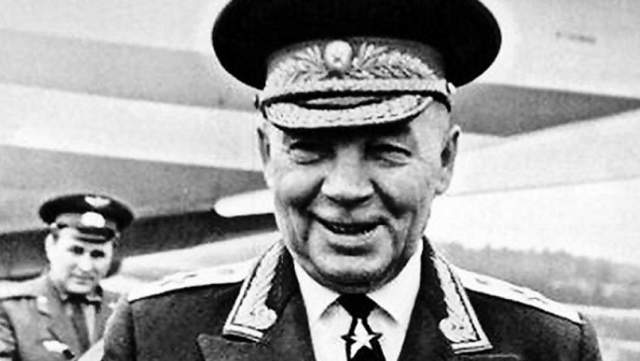
Commander of the Airborne Troops, Army General Vasily Margelov
Image source: Photo: Archive of the Ministry of Defense of the Russian Federation
And Vasily Filippovich made his last parachute jump a year later, at the age of 65. However, he believed in his fighters as well as in himself. And soon he proposed to the minister the candidacy of two paratroopers without fear and reproach — Zuev and Alexander Margelov, his own son. Perhaps this is what convinced Andrei Grechko: if the general is ready to throw his son into hell, then he is confident of success.
Flying in an armored car
The preparation of a risky experiment has begun. The parachute system "fighting machine — man" was named "Centaur". The descent was prepared using a multi-dome parachute system and a P-7 parachute platform. Inside the BMD, the paratroopers were located on modernized space chairs of the Kazbek-D type, developed under the leadership of academician Guy Severin.
Lieutenant Colonel Leonid Zuev was appointed commander and driver of the first crew, and Senior Lieutenant Alexander Margelov was appointed gunner. The first, a master of parachuting, was 41 years old, the second turned 27. Zuev happened to meet Yuri Gagarin shortly after the world's first space flight. Since then, he has learned a simple truth: Soon, at the Warsaw Pact exercises, Zuev made a risky low-altitude jump, detaching himself from the tugboat 70 meters to the ground. He experimented, designed seats for parachute platforms — and this attracted the attention of the commander.
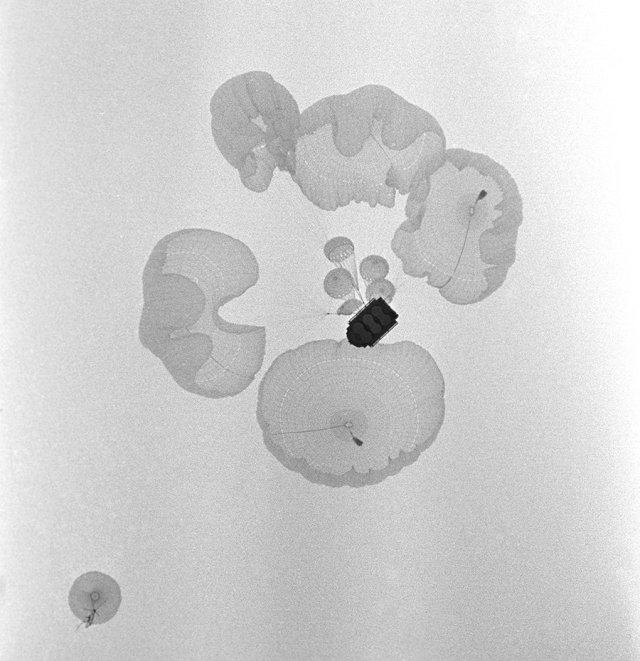 |
| BMD-1 reset on multi-dome parachute systems. |
| Source: RIA Novosti/Lev Polikashin |
We prepared thoroughly, on a special simulator, near Moscow, in the Bear Lakes. The medical service of the division provided the officers with additional nutrition from a mixture of glucose and ascorbic acid solution.
The Centaur complex has been tested more than once, including with the participation of animals. The paratrooper officers, Zuev and Margelov, were also thoroughly preparing for the task. But the main test was coming soon after the New Year holidays, at the training ground of the 106th Guards Division of the Airborne Forces "Slobodka", not far from Tula.
On day X, they got up at 6:30. Charging in a 20-degree frost, breakfast. Zuev and Margelov passed a medical examination. Sending them to the feat, General Margelov again complained that he himself could not take a place in a combat vehicle .... Hugging his son and Zuev, he said softly: "See you on earth, my sons. I believe in you!"
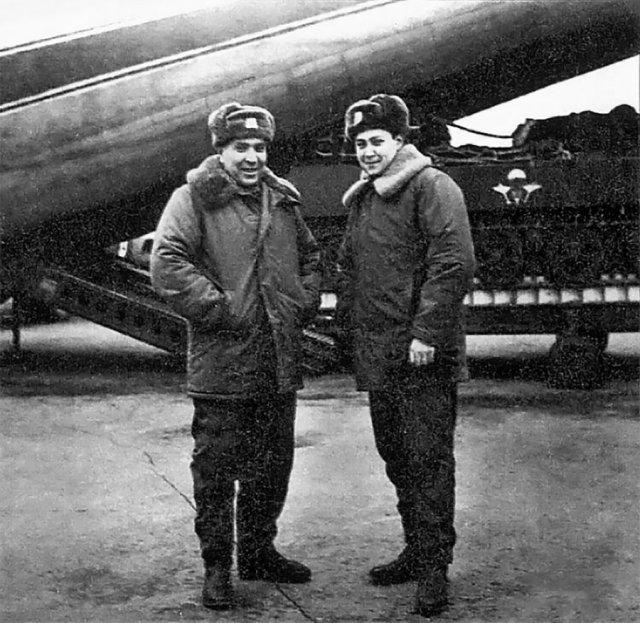 |
| The commander of the Guard crew, Lieutenant Colonel Leonid Zuev, and the gunner-operator, Lieutenant Alexander Margelov. |
| Source: Ministry of Defense of the Russian Federation |
Alexander Margelov:
The heroes had only two minutes to moor after landing. We had time. They acted without fuss, calmly and with concentration. After landing, the crew fired blanks on the move. They were ready to go into battle right away.
Everything went smoothly, and even the connection in flight and after landing did not disappoint. This meant that even in combat conditions such operations could be undertaken thoughtfully and in an organized manner, in cooperation with other troops.
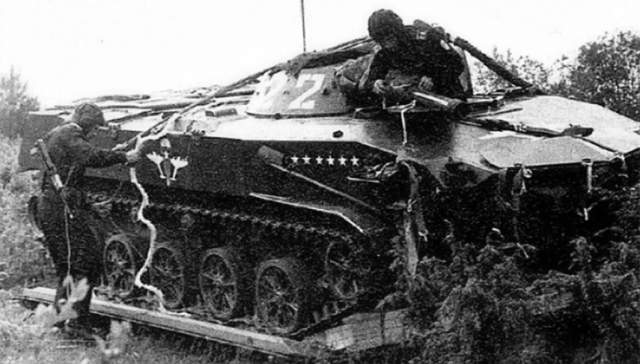
Lieutenant Colonel Leonid Zuev and Lieutenant Alexander Margelov after landing the Centaur
Image source: Photo: archive of the Ministry of Defense of the Russian Federation
The paratroopers famously, at high speed, drove up to the podium, crushed the car of the chief of staff of the division on the way (he was warned about such a probability!), stopped in front of the commander and clearly reported on the successful completion of the combat mission. Margelov kissed his "eagles". The heroes were awarded not only orders, but also gold watches — personally from the Minister of Defense.
Very soon, General Margelov ordered to repeat the successful experiment in all airborne divisions. At the same time, dozens of full-time crews of "armored paratroopers" were formed, who were meticulously trained for such dangerous flights and throws. All tests were successful, without technical failures and casualties.
Echoes of the landing
Now the Airborne Forces were preparing for a much more difficult task — for the airborne landing of the crew inside the BMD-1 on a parachute-jet system (PRS), without a platform, in free flight on parachutes. This unique program, which made it possible to perform combat missions even faster and more efficiently, was called the "Jet Centaur". The BMP already had a full—fledged crew - six people. The test of the "Reactaur" was carried out in January 1976, near Pskov. And again — an impeccable success.
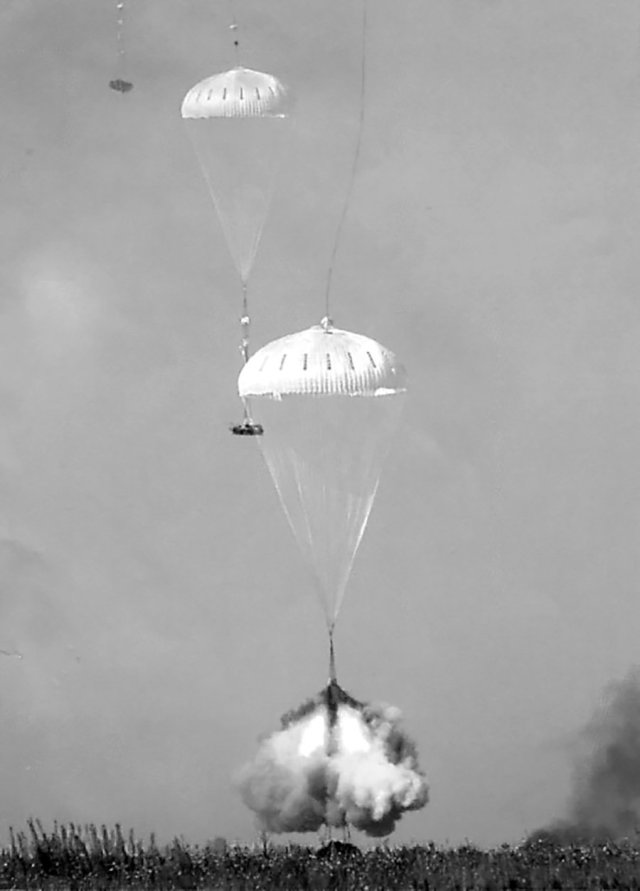 |
| In the "Reactaur" at the moment of landing, the vertical descent rate was extinguished to zero due to the thrust of the jet engines. |
| Source: Ministry of Defense of the Russian Federation |
Yes, paratroopers 50 years ago performed a feat at the risk of their lives. But when cars land without people, coordination of actions disappears, time is lost, often the crew has to look for their "armored car". And after January 1973, it became clear that our paratroopers were able to engage in battle immediately after the descent and occupy the designated objects on combat vehicles, ahead of the enemy in a Suvorov manner.
The troops received a large number of new BMD-1s, and the designers began to modernize the machine. Soon the army received a new transport aircraft — IL-76. The powerful machine could land four BMDS at once and provided the release of an amphibious group of 125 fighters. Previously, it took several days to relocate the Airborne division, now it takes half an hour.
The Centaur throw is a legendary page in the history of our army. The peak of the combat capability of "Uncle Vasya's troops", as the Airborne Forces are proudly called many years after the death of the legendary general. No other army in the world has ever mastered this method of landing.
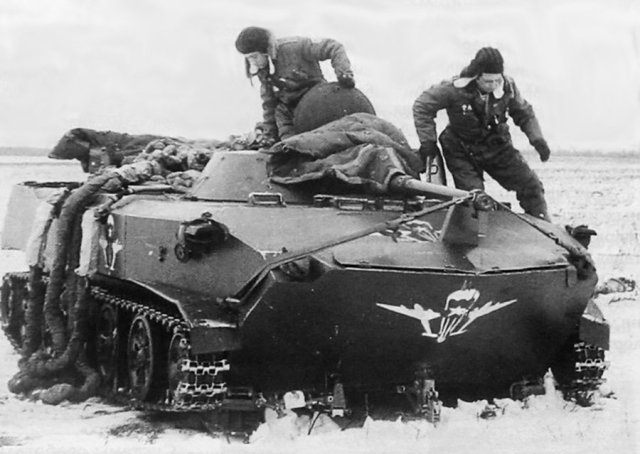 |
| Major Alexander Margelov and Lieutenant Colonel Leonid Shcherbakov landed on the "Reactaur". |
| Source: Ministry of Defense of the Russian Federation |
This day is considered the beginning of a new era in the history of Soviet and Russian paratroopers. And General Margelov did not exaggerate when he said that the landing is "this is the courage of the highest class, bravery of the first category, combat readiness number one."
The author is the deputy editor—in-chief of the magazine "Historian"Arseniy Zamostyanov
